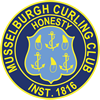Home » About Curling
About Curling
Curling was invented in medieval Scotland, with the first written reference to a contest using stones on ice coming from the records of Paisley Abbey, Renfrewshire, in February 1541. Two paintings, “Winter Landscape with a Bird Trap” and “The Hunters in the Snow” (both dated 1565) by Pieter Bruegel the Elder depict Flemish peasants curling—Scotland and the Low Countries had strong trading and cultural links during this period, which is also evident in the history of golf.
Evidence that curling existed in Scotland in the early 16th century includes a curling stone inscribed with the date 1511 uncovered (along with another bearing the date 1551) when an old pond was drained at Dunblane, Scotland. Kilsyth Curling Club claims to be the first club in the world, having been formally constituted in 1716; it is still in existence today. Kilsyth also claims the oldest purpose-built curling pond in the world at Colzium, in the form of a low dam creating a shallow pool some 100 × 250 metres in size.
The word curling first appears in print in 1620 in Perth, Scotland, in the preface and the verses of a poem by Henry Adamson. The game was (and still is, in Scotland and Scottish-settled regions like southern New Zealand) also known as “the roaring game” because of the sound the stones make while traveling over the pebble (droplets of water applied to the playing surface). The verbal noun curling is formed from the Scots (and English) verb curl, which describes the motion of the stone.
In the early history of curling, the playing stones were simply flat-bottomed river stones, which were of inconsistent size, shape and smoothness. Unlike today, the thrower had little control over the ‘curl’ or velocity and relied more on luck than on precision, skill and strategy.
In Darvel, East Ayrshire, the weavers relaxed by playing curling matches using the heavy stone weights from the looms’ warp beams, fitted with a detachable handle for the purpose. Many a wife would keep her husband’s brass curling stone handle on the mantelpiece, brightly polished until the next time it was needed. Central Canadian curlers often used ‘irons’ rather than stones until the early 1900s, Canada is the only country known to have done so, while others experimented with wood or ice-filled tins.
Outdoor curling was very popular in Scotland between the 16th and 19th centuries because the climate provided good ice conditions every winter. Scotland is home to the international governing body for curling, the World Curling Federation, Perth, which originated as a committee of the Royal Caledonian Curling Club, the mother club of curling.
Today, the game is most firmly established in Canada, having been taken there by Scottish emigrants. The Royal Montreal Curling Club, the oldest established sports club still active in North America, was established in 1807. The first curling club in the United States was established in 1830, and the game was introduced to Switzerland and Sweden before the end of the 19th century, also by Scots. Today, curling is played all over Europe and has spread to Brazil, Japan, Australia, New Zealand, China, and Korea.
The first world championship for curling was limited to men and was known as the Scotch Cup, held in Falkirk and Edinburgh, Scotland, in 1959. The first world title was won by the Canadian team from Regina, Saskatchewan, skipped by Ernie Richardson.
Powered by WordPress | Compass by InkThemes.
